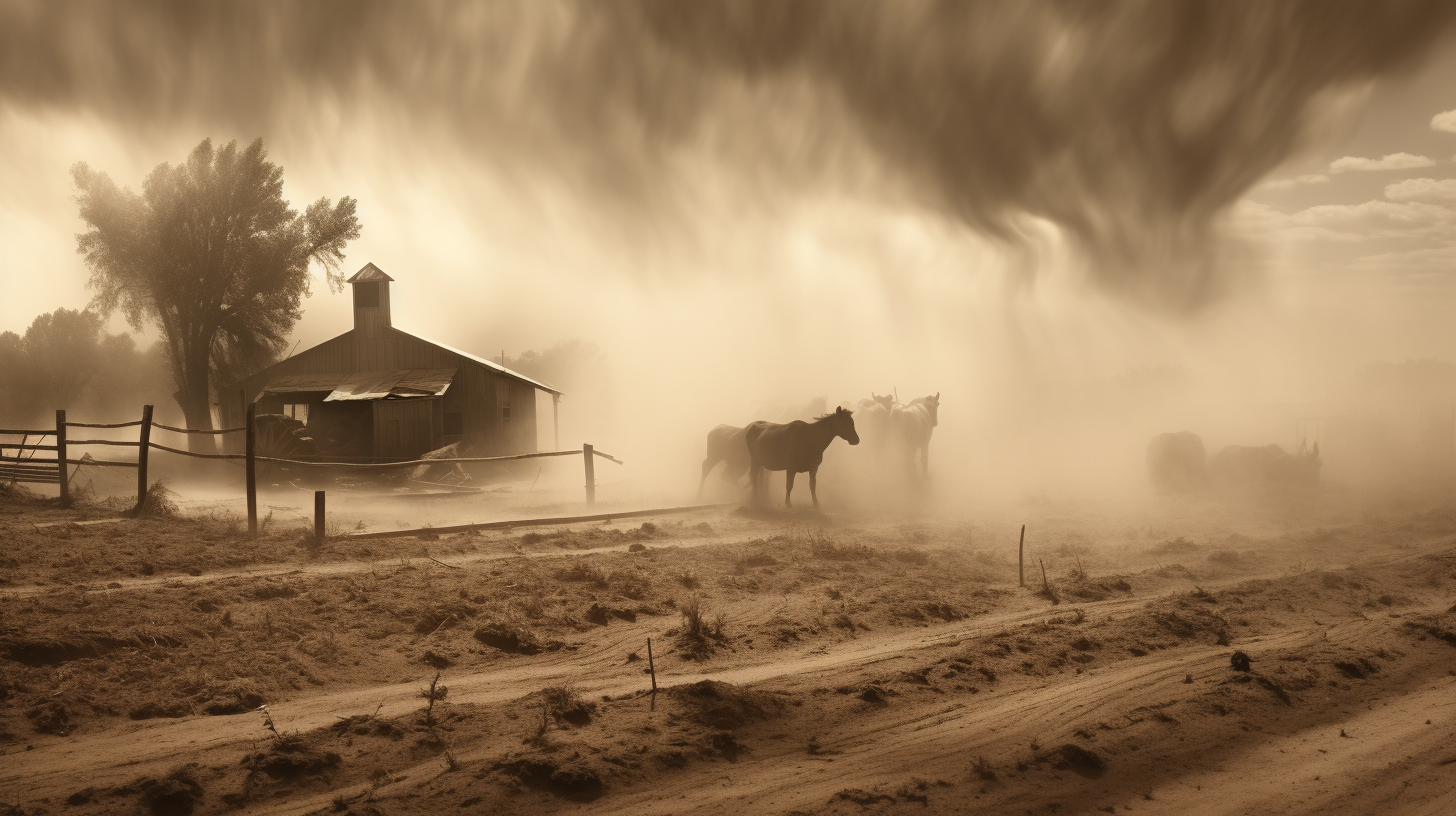In a tragic homage to the 1930s, we’re witnessing the re-emergence of the dust bowl, an ecological disaster of our own making. Akin to the catastrophic decimation of the once rich North American prairies, today’s desolate landscapes stand as a sentinel of human failure in the face of climate calamity. In an era where oceanic farms have become humanity’s distorted lifeline, the death rattles of terrestrial agriculture echo through the barren fields.
Driving through the heartland, one is met with an eerie silence, broken only by the howling of the wind as it whips up soil into a frenzy. This is Farming at the Mercy of the Wind: a once-proud industry now crumbling like the dry earth. Amidst the swirling dust, intermittent glimpses of abandoned machinery and desiccated crops speak volumes of the desperation that grips the region.
Farmers, ever the emblem of steadfastness, now watch helplessly as their topsoil—the lifeblood of their trade—becomes airborne. The earth, rendered impotent by years of overcultivation and exacerbated by unyielding droughts, can no longer sustain the crops. What little remains is contingent on the capricious temperament of the climate, with predictions as unreliable as the next rainfall.
The advent of agricultural technologies that promised resilience has fallen short. Innovations like drought-resistant seeds and precision farming are but a futile grasp at control when confronted with relentless superstorms and creeping desertification. One farmer lamented, ‘We were promised progress, but all we got was abandonment.’
Meanwhile, the market for dust masks and air purifiers has never been more bullish. Climate refugees trek from dusted lands to overcrowded megacities, seeking respite and a semblance of normalcy. Yet, as humanity clings to its floating farms and vertical gardens, it’s clear the tether to terra firma is fraying. Societies adjust to a future where ‘soil-grown’ becomes a term of antiquity, and children learn of wheat and maize from textbooks rather than fields.
The dietary shift is palpable. Quinoa and soy, once staples of indulgence and choice, now hang from a thread, their fates intertwined with the soil’s ability to withstand the next gust. It’s not just about missing flavors; it’s the annihilation of a culture, of generations for whom the harvest was a ritual, a marker of time and tradition.
Experts grapple with the implications, drawing parallels to the ‘Farms Afloat’ phenomenon. ‘If the seas were our last resort, the resurgence of the dust bowl is surely our final warning,’ one commented. The courage to inhabit the waters bespoke a species adaptable, yet the floundering of farms on land signifies perhaps an adaptation too far.
The grim reality sets in; we stand as silent witnesses to the decimation of a legacy. ‘We fed nations,’ an old farmer recalled, ‘and now we feed the wind.’
The troubling question persists: What next? As the sun sets behind a curtain of dust, it’s a query that carries the weight of the world—its answer as uncertain as the direction of the next storm. Will humanity’s ingenuity catch the wind, or will we be forever chasing the soil we’ve lost? The conclusion remains to be written, but for now, the pen hangs listlessly above the blighted page.
